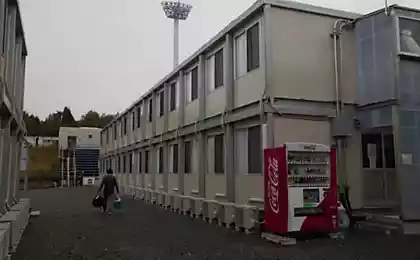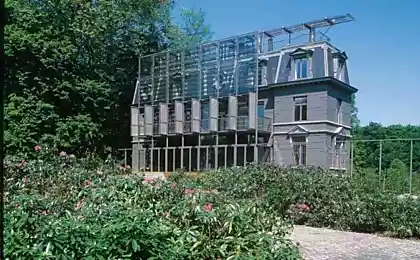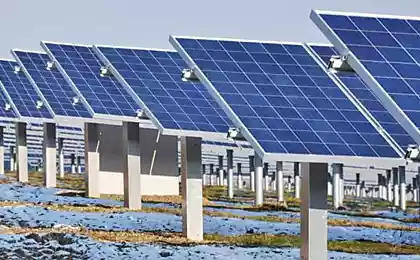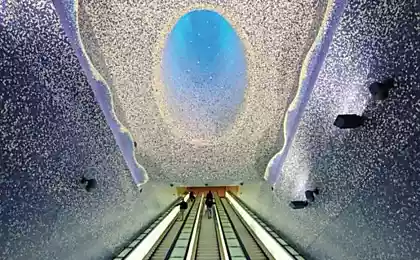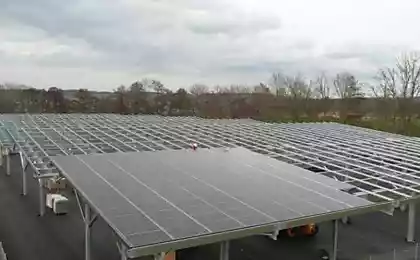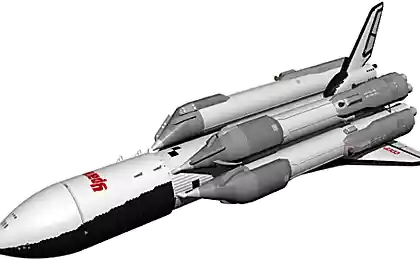479
Solar power plant on the water
Two Swiss companies have teamed up to Finance a futuristic research project – floating laboratories powered by solar energy, designed to explore "the effectiveness of concentrated solar energy on the water." By the end of the year the world will get the first three Sunny island.
The lab will be launched at the shore of the Swiss lake neuchâtel in August. According to the specification of each station:
each floating laboratory in diameter is 25 meters and bears 100 PV panels;
— each panel will be installed "back to back" at an angle of 45 degrees;
the Islands can rotate 220 degrees in the direction of the Sun, tracking it throughout the day;
— their placement in the water reduces drag and therefore increases efficiency.

Each station will be connected to the network on the shore and fixed at the bottom by concrete blocks and cables. It is expected that the Sunny island will remain unchanged for a quarter of a century.
It all seems far-fetched, but the idea of these stations there are already more than five years. Floating solar designs were first proposed in 2007 by Thomas Hinderling (Thomas Hinderling), Swiss researcher, who at the time was CEO of the Swiss Center for Electronics and Microtechnology (Centre Suisse d'electronique et de Microtechnique). Then his vision of this idea looked like this:

Hinderling, drew his idea on the website that attracted investments in the amount of $ 5 million from the UAE, which have recently started to promote the financing of clean energy technologies.
A prototype floating solar power station was built in 2009 near Abu Dhabi.
Hinderling expects that the island is not more than a mile in width will be able to generate 190 MW of energy at a price of $ 0.15 per kilowatt hour.
The Islands will float on the water surface and consist of plastic membrane mounted mirrors that concentrate the sun's rays. Mirrors will be used for heating the liquid and turning it into steam that will spin a turbine that generates electricity. The entire platform can be rotated in the direction of the Sun, which will increase the efficiency of energy generation without complicated tracking systems.
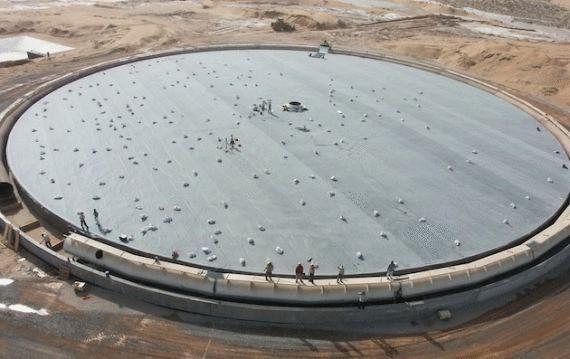
Satisfied achievements, Hinderling promotes your project to the next level. Now his company is called Nolaris and she was able to attract 108 million dollars in investment from Viteos SA, a Swiss energy company. This is sufficient for the construction of three Islands and the infrastructure necessary for transference of energy to the shore. Once built, each island will boast a capacity of 33 KW.
It is unlikely the critics will continue to call the project unrealistic. But at this stage, with increasing climate change, we need more experiments like this.
Source: /users/104
The lab will be launched at the shore of the Swiss lake neuchâtel in August. According to the specification of each station:
each floating laboratory in diameter is 25 meters and bears 100 PV panels;
— each panel will be installed "back to back" at an angle of 45 degrees;
the Islands can rotate 220 degrees in the direction of the Sun, tracking it throughout the day;
— their placement in the water reduces drag and therefore increases efficiency.

Each station will be connected to the network on the shore and fixed at the bottom by concrete blocks and cables. It is expected that the Sunny island will remain unchanged for a quarter of a century.
It all seems far-fetched, but the idea of these stations there are already more than five years. Floating solar designs were first proposed in 2007 by Thomas Hinderling (Thomas Hinderling), Swiss researcher, who at the time was CEO of the Swiss Center for Electronics and Microtechnology (Centre Suisse d'electronique et de Microtechnique). Then his vision of this idea looked like this:

Hinderling, drew his idea on the website that attracted investments in the amount of $ 5 million from the UAE, which have recently started to promote the financing of clean energy technologies.
A prototype floating solar power station was built in 2009 near Abu Dhabi.
Hinderling expects that the island is not more than a mile in width will be able to generate 190 MW of energy at a price of $ 0.15 per kilowatt hour.
The Islands will float on the water surface and consist of plastic membrane mounted mirrors that concentrate the sun's rays. Mirrors will be used for heating the liquid and turning it into steam that will spin a turbine that generates electricity. The entire platform can be rotated in the direction of the Sun, which will increase the efficiency of energy generation without complicated tracking systems.

Satisfied achievements, Hinderling promotes your project to the next level. Now his company is called Nolaris and she was able to attract 108 million dollars in investment from Viteos SA, a Swiss energy company. This is sufficient for the construction of three Islands and the infrastructure necessary for transference of energy to the shore. Once built, each island will boast a capacity of 33 KW.
It is unlikely the critics will continue to call the project unrealistic. But at this stage, with increasing climate change, we need more experiments like this.
Source: /users/104


